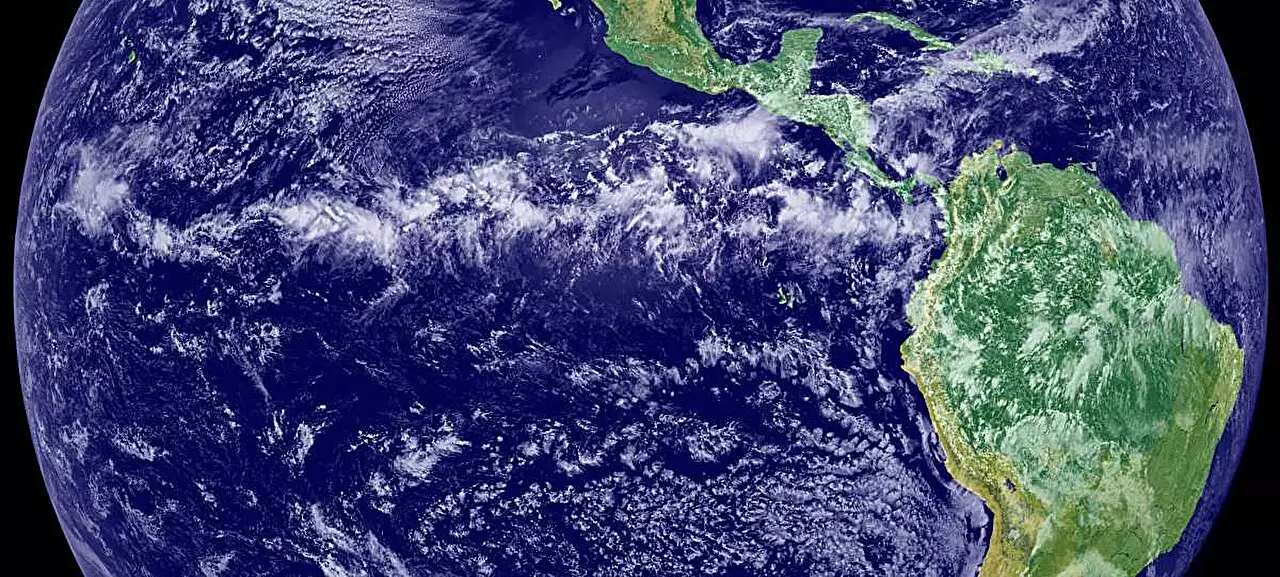The summer of 2024 marked an unprecedented climatic event, emerging as the hottest season on record worldwide. This extreme heat was not merely an anomaly; it reflected a troubling trend of increasing temperatures and diminishing moisture levels that have been observed globally, particularly throughout the Northern Hemisphere. As droughts intensify and heatwaves become more common, we confront dire societal challenges. These include rampant wildfires, significant crop failures, and an escalating number of health complications related to extreme temperatures. At the heart of this dilemma lies a crucial component of our planet’s weather systems: air circulation.
Understanding Global Air Circulation Systems
Air circulation systems are instrumental in distributing heat and moisture around the earth, playing a pivotal role in regulating global climates. However, recent research suggests that these systems are weakening, a phenomenon that has raised urgent questions among climatologists. This deterioration can be seen in two primary atmospheric processes: storm tracks and Hadley circulation. Storm tracks, characterized by the flow of high and low-pressure systems from west to east, significantly influence moisture content and heat transfer between different climate zones. Meanwhile, Hadley circulation describes the pattern where warm equatorial air ascends, travels toward the poles, and descends again in the subtropics, creating a dynamic cycle that has historically maintained climatic balance.
In groundbreaking research led by Dr. Rei Chemke from the Weizmann Institute of Science, substantial evidence has emerged linking human activities, particularly emissions of greenhouse gases and aerosols, to the weakening of these critical air circulation systems. In a collaborative study with Professor Dim Coumou of the Vrije Universiteit Amsterdam, Chemke’s team revealed for the first time that the observed decline in storm track strength directly correlates with human-induced climate factors. Elevated emissions have disproportionately warmed the high latitudes compared to lower latitudes, thereby reducing the temperature gradient that powers storm tracks. This alteration triggers a chain reaction that exacerbates heat intensity over land, as fewer storms translate into insufficient cooling from ocean air.
Methodological Insights and Findings
The team’s findings add a significant layer to our understanding of climate dynamics, supported by extensive analyses of historical climate data and advanced climate models. When historical emissions were incorporated into their models, researchers could effectively explain the observed weakening of both storm tracks and Hadley circulation systems. The ability to analyze vast datasets culminated in a thorough breakdown of how these changes contribute to rising temperature extremes during the summertime.
Chemke pointed out that the implications are profound: “Storms in summer are essential for transporting cool ocean air to the land.” The diminished intensity of these storms directly contributes to persistent heat events, creating an escalating cycle of warming that can have catastrophic effects on ecosystems and human society.
Contrast with Historical Climate Influences
While contemporary analysis predominantly focuses on human impacts on climate, Chemke’s research illustrates a stark contrast to historical norms, where natural factors significantly shaped atmospheric dynamics. In a separate study published in *Nature Communications*, Chemke and research student Or Hess employed climate models to reconstruct the effects of natural phenomena—like volcanic eruptions and variations in solar activity—on Hadley circulation over the past millennium. Their findings indicate that historically, such natural factors served to strengthen, rather than weaken, Hadley circulation.
Hess noted, “In the previous millennium, natural factors were dominant, whereas now, manmade emissions play a more dominant role.” This shift represents a pivotal transformation, as historical climate variations increasingly give way to anthropogenic influences characterized by rising temperatures that destabilize established atmospheric patterns.
These findings challenge the conventional focus within climate science that often emphasizes anthropogenic factors while marginalizing natural influences. Chemke emphasized the need for a balanced examination of both elements, asserting, “Natural factors can play a major role in climate dynamics, albeit often overshadowed by human-induced changes.” As our understanding of climate systems continues to evolve, acknowledging the substantial effects of both natural and anthropogenic factors will be crucial for developing accurate predictive climate models and informing effective policy responses.
Ultimately, the findings accentuate the urgency with which we must confront our influence on climate systems. As heat extremes become increasingly commonplace, recognizing the interdependence of human activity and natural climate processes is vital for fostering a resilient future. Understanding the consequences of our actions may empower us to take proactive steps toward mitigating climate change, ensuring a livable planet for generations to come.


Leave a Reply